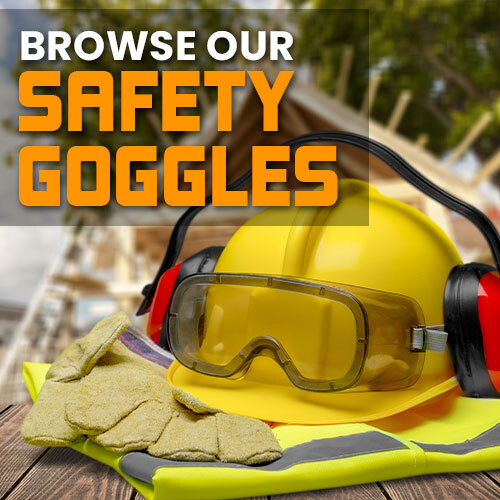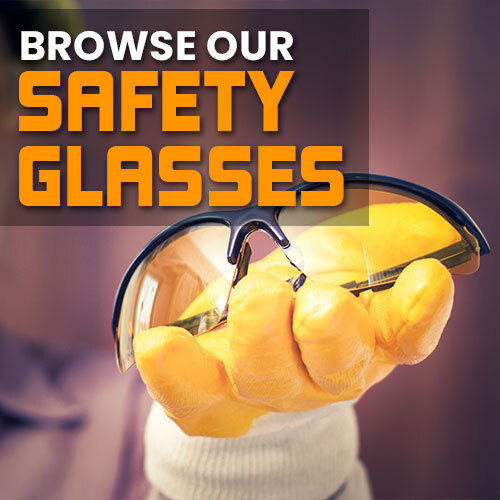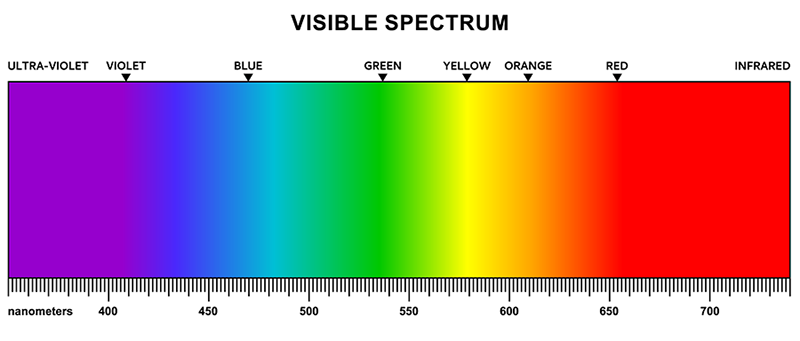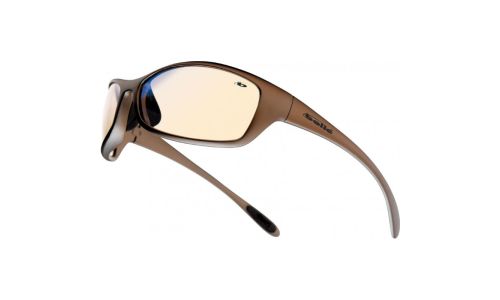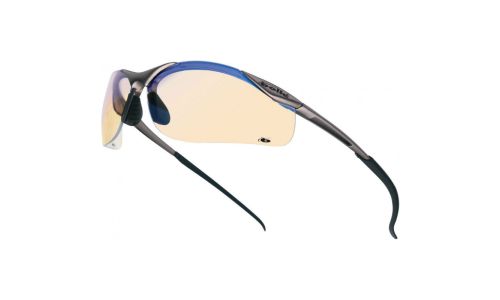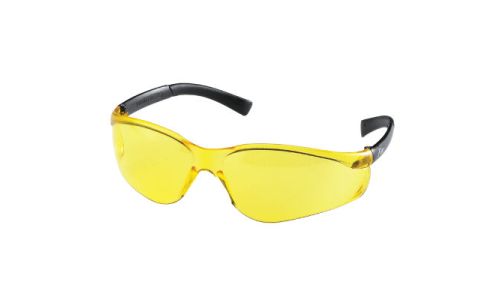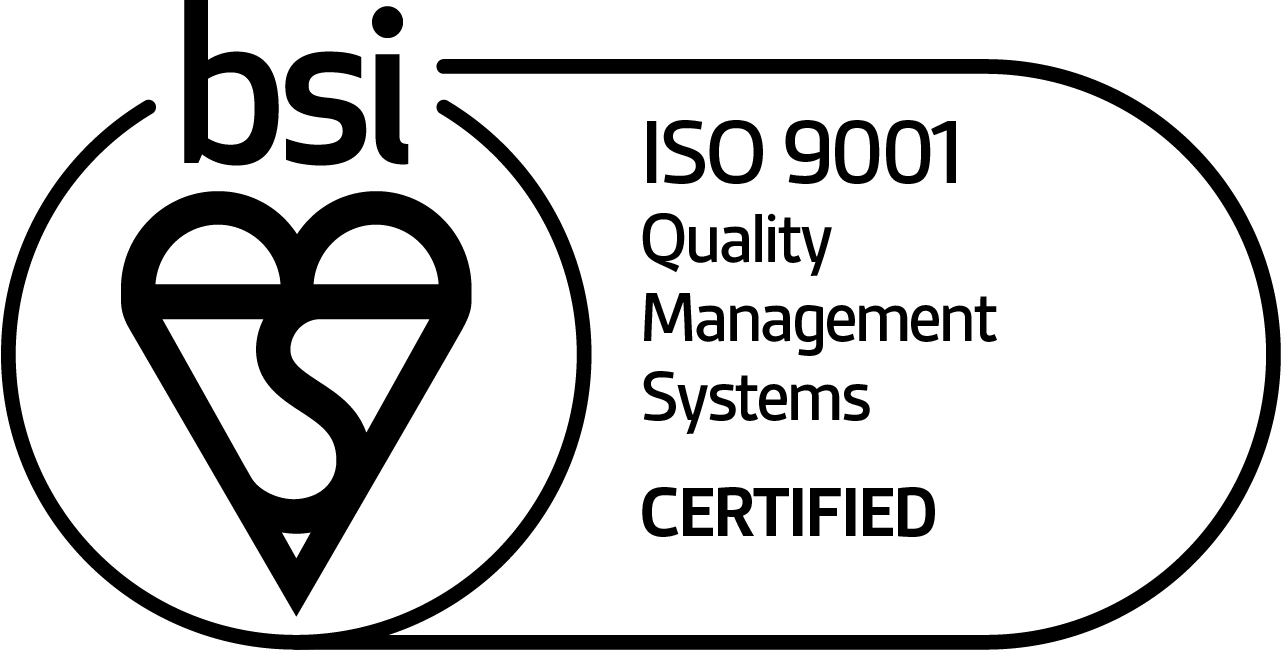| The Effects of Blue Light and How to Protect Your Eyes13 December 2018 Blue light is everywhere. In fact it comes from the sun, and it's the reason that the sky we see during the day is blue. Molecules in the air scatter blue light more than they do red, meaning that the sky appears to be a light blue colour rather than red. During a sunset we see red and orange because the blue light has been scattered out and away from our line of sight, leaving red and orange in its place.
Blue light from the sun has travelled a long distance so it doesn't do much damage to our eyes. Here at SafetyGoggles.co.uk we're much more concerned about exposure to blue light from TVs, LED lights, CFL bulbs, laptops, mobile phones, and tablets, with the close distance between your eyes and the transmitter leading to worrying links between exposure, a lack of sleep, eye damage and other health problems. This article explains the effects of blue light and how to prevent blue light from impacting your health. What is Blue Light?Blue light is at the end of the visible light spectrum, defined as having a wavelength between 400nm and 495nm. As it is at the end of the visible light spectrum, closer to the invisible infrared, it has shorter, higher energy wavelengths. While you can find blue light everywhere, we face blue light more directly from electronic devices such as computers, laptops and mobile phones. You can also find blue light emitting from LED screens and certain types of light bulbs, and as nearly half of adults in the UK now spend a prolonged amount of time in front of a computer at work, we are exposed to far more blue light than we ever have before. Young people are known for staying up late on mobile phones too, with scientists becoming increasingly concerned at the effects blue light has on sleep, eye health, and general long term physical health. Why is it Dangerous?Blue light is on the far left of the visible light spectrum, next to UV light on the left and green light on the right. As the light is located to the left it has shorter wavelengths. The shorter wavelengths create a form of flickering, which when transmitted to the eye, becomes a glare that causes contrast to be affected and sharpness and clarity to be reduced.
It is believed that it is this flickering that can be the cause of eyestrain, headaches and the physical and mental fatigue that you may feel after a long day in the office in front of a computer screen. This isn't were it ends, and studies show worrying links between blue light and retinal damage, macular degeneration and other negative health problems. What Health Problems are Linked to Blue Light?The main causes for concern surrounding blue light are its effects on your sleeping pattern and the damage it may cause to your eyes. Blue light from our sun helps to regulate our circadian rhythm (sleeping pattern). By disrupting this pattern and exposing your eyes to blue light at unnatural hours you can delay your sleep, which leads to sleep deprivation and serious health problems, particularly in young people. The other main cause for concern is the damage that it may cause to your eyes. Studies have found links between increased blue light exposure and the development of age-related macular degeneration, something that can cause decreased visibility in older people followed by blindness. Other impacts of blue light may include:
How Can I Protect Myself from Blue LightIf you spend all day in front of a computer, spend time on night shifts, or work in a place with a high amount of LED and CFL bulbs, then you are at the highest risk of your eyes being negatively affected by blue light. There are a few ways to reduce the risk, which includes limiting screen time, placing filters on your computer or wearing special contact lenses that can prevent blue light from reaching your eyes. The simplest way to reduce the risk of blue light is to wear glasses that come with a yellow or amber filter. Who Would Benefit From Wearing Blue Light Glasses?Many workers and non-workers would benefit from wearing yellow tinted safety glasses. It is recommended that you do so if you:
Which Yellow Tinted Safety Glasses Are for Me?Bollé Spider ESP Lens Safety Glasses SPIESPThe Bollé Spider ESP Lens Safety Glasses SPIESP feature a yellow tinted lens with a non-slip nose bridge and Tipgrip temples for improved comfort and fit. They are recommended for use by night workers and those who work in an artificially lit environment. Their ESP lens is durable as it is scratch resistant, while the reduced effects of dazzle enhance clarity.
Bollé Contour ESP Lens Safety Glasses CONTESPThe Bollé Contour ESP Lens Safety Glasses CONTESP are perfect for reducing the effects of blue light, as their lightweight design offers comfort throughout use. Their sporty look ensures you look cool wherever you wear them, while a full panoramic view ensures clarity. They are ideal for workers who are concerned with the impact of blue light on their eyes.
MCR Safety Parmalee Fire Amber Lens Safety Glasses 83004-20Finally the affordable and reliable MCR Safety Parmalee Fire Amber Lens Safety Glasses 83004-20 are well suited to anyone concerned about blue light, either at home or at work. Bright yellow in colour, their lenses help to reflect blue light away from the eyes, while flexible temples and non-slip rubber ensure comfort during use. The Fire Lens Glasses are perfect for anyone who wants to protect their eyes in front of a screen.
Don't Take the RiskBy protecting our eyes from blue light damage now, we can reduce the side effects that we may face in the future. If you're concerned about the effects of blue light, take a look at our range of Yellow Safety Glasses, all designed to protect you from the dangers of harmful blue light. If you're after some advice regarding blue light, leave a comment below or call us on 020 7501 0594 where one of our experts will be delighted to help. |
